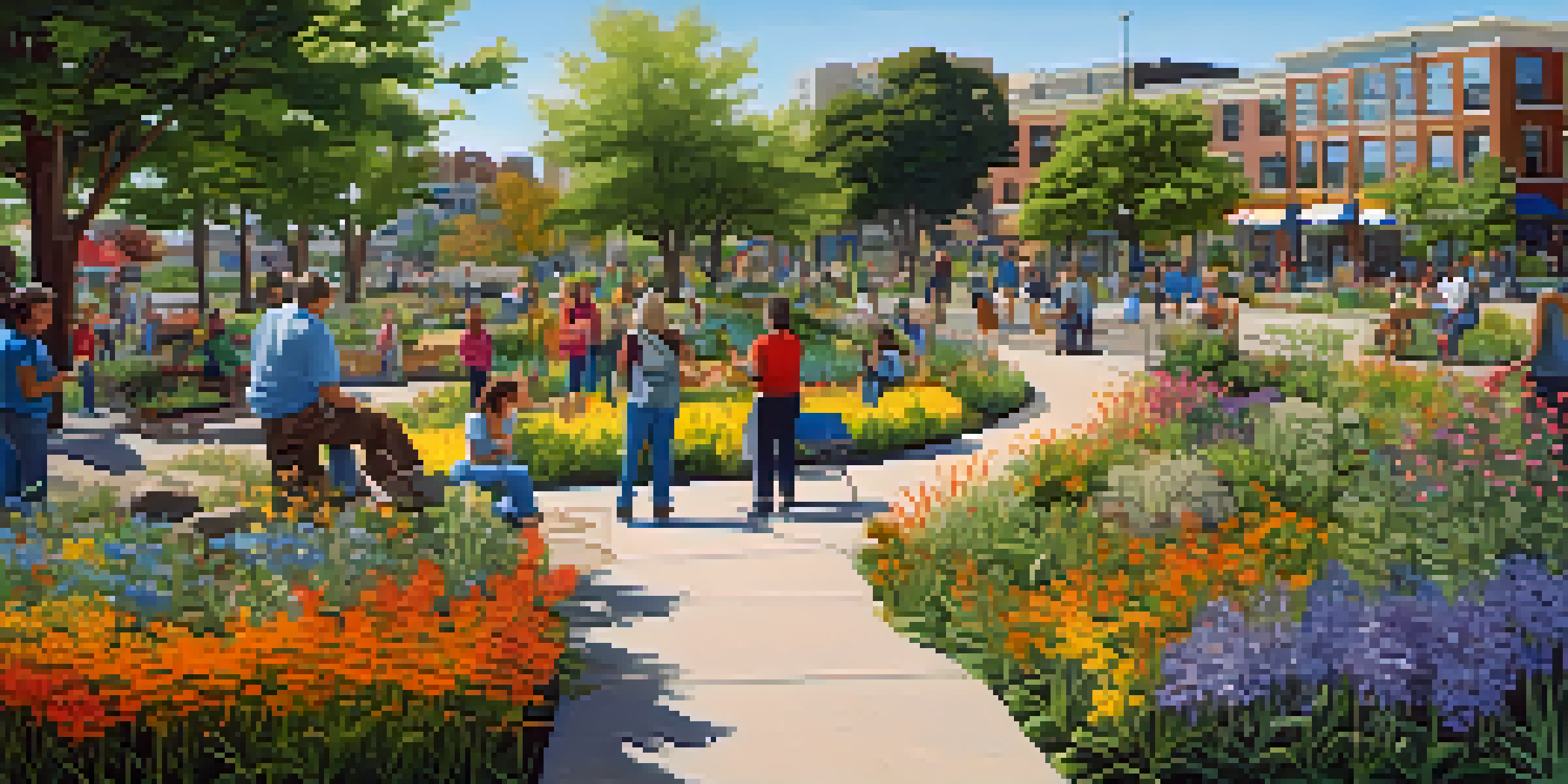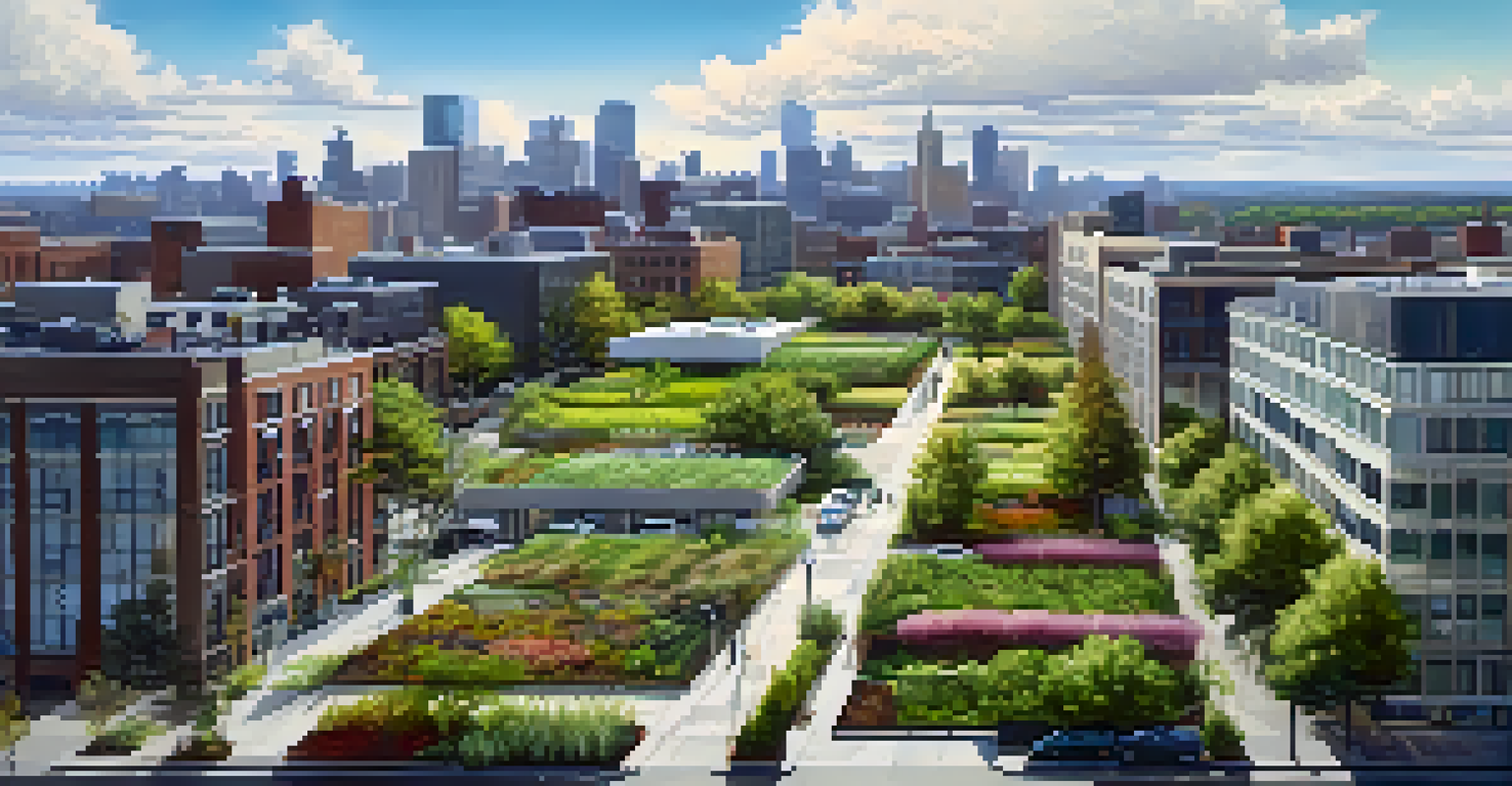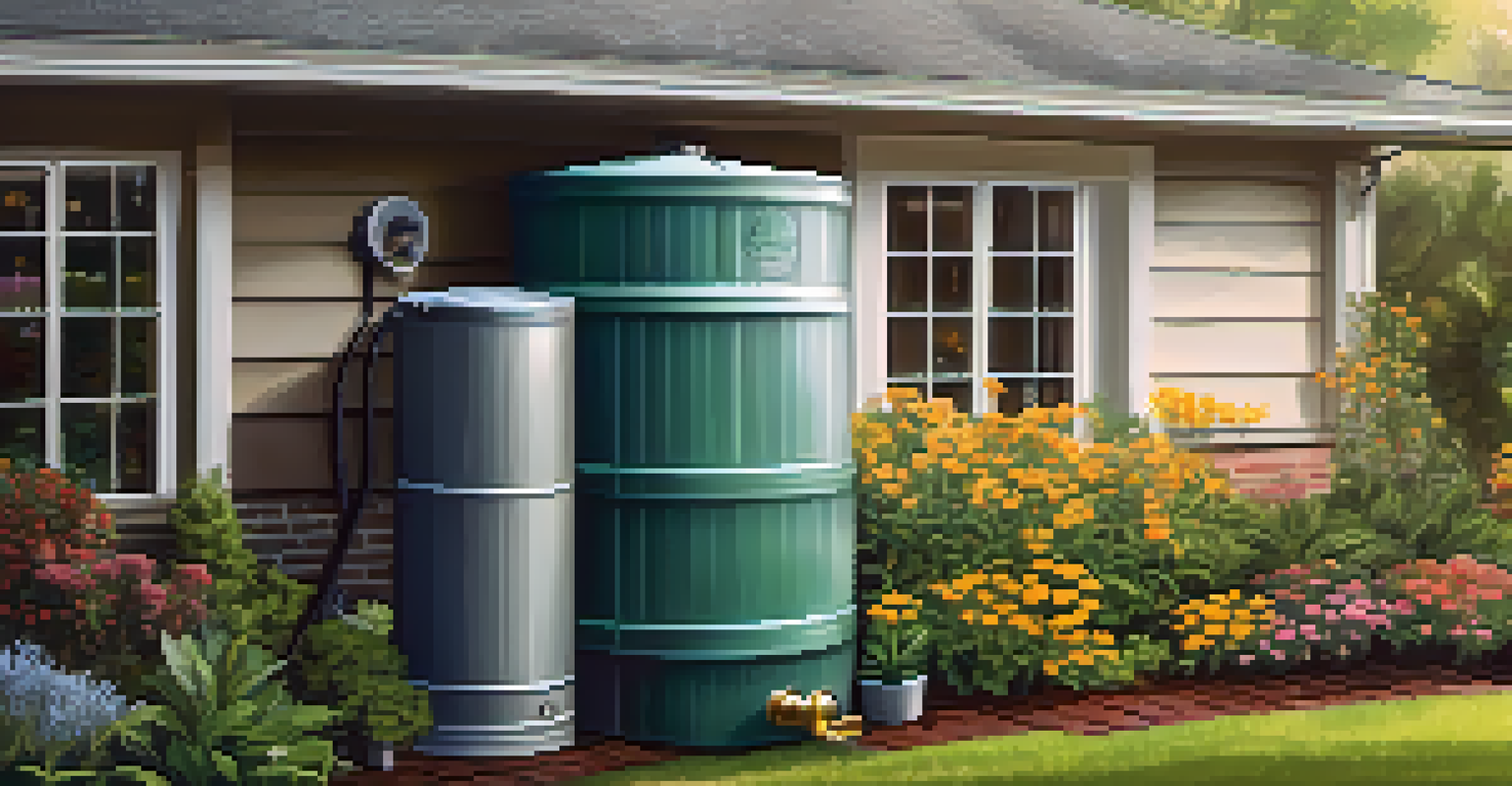Water Conservation Practices in Sustainable Urban Design

Understanding the Importance of Water Conservation
Water conservation plays a vital role in sustainable urban design, especially as cities face increasing pressure from population growth and climate change. By managing water resources wisely, urban areas can reduce their ecological footprint and enhance resilience to droughts and flooding. Think of water as a finite resource; much like money in a budget, it requires careful planning and allocation.
The greatest threat to our planet is the belief that someone else will save it.
Incorporating water-saving practices not only benefits the environment but also promotes social equity. Communities that prioritize water conservation can ensure that all residents have access to this essential resource, regardless of socioeconomic status. Imagine a neighborhood where every home has a rain barrel; it not only reduces water bills but empowers families to contribute to sustainability efforts.
Moreover, effective water management can lead to economic advantages. By investing in water conservation technologies and infrastructure, cities can lower their operational costs and attract businesses that value sustainability. This shift towards eco-friendly practices can create a ripple effect, encouraging residents and companies alike to adopt greener habits.
Implementing Green Infrastructure Solutions
Green infrastructure is a key element in promoting water conservation within urban environments. This approach utilizes natural processes to manage stormwater, improve water quality, and enhance biodiversity. For example, green roofs not only absorb rainwater but also provide insulation for buildings and reduce the urban heat island effect.

Permeable pavements are another innovative solution, allowing rainwater to infiltrate the ground rather than flow into drainage systems. This can significantly reduce runoff and recharge groundwater supplies. Picture a parking lot designed with permeable materials; during a heavy rainstorm, instead of flooding, the water seeps into the ground, replenishing local aquifers.
Water Conservation Enhances Resilience
By managing water resources wisely, urban areas can reduce their ecological footprint and better withstand climate challenges.
The incorporation of bioswales, which are landscape elements designed to concentrate or remove debris and pollution from surface runoff, can further enhance urban sustainability. These features not only manage water effectively but also add aesthetic appeal to neighborhoods. Imagine walking down a street lined with lush bioswales, where water is managed beautifully, benefiting both nature and the community.
Rainwater Harvesting: A Practical Approach
Rainwater harvesting is a straightforward yet effective method for conserving water in urban areas. By collecting and storing rainwater from rooftops, homeowners and businesses can reduce their reliance on municipal water supplies. It's like having a backup water source; when the clouds open up, you’re capturing that free resource for later use.
We won't have a society if we destroy the environment.
This practice can be implemented on various scales, from individual homes to large commercial buildings. For instance, a small residential system might involve a simple barrel, while a larger facility could utilize sophisticated tanks and filtration systems. By using harvested rainwater for irrigation, toilet flushing, and even laundry, users can significantly decrease their water consumption.
Moreover, rainwater harvesting systems can be integrated into existing infrastructure with relative ease. With the right design, they can complement green roofs and permeable pavements, creating a holistic approach to urban water management. Imagine a city where every building actively contributes to its own water supply, fostering a sense of community responsibility and environmental stewardship.
The Role of Native Landscaping in Water Conservation
Utilizing native plants in urban landscaping is a powerful way to conserve water. These plants are adapted to local climates and require less irrigation compared to non-native species. By designing gardens and parks with native flora, cities can promote biodiversity while minimizing water usage.
For example, a park filled with drought-resistant native plants can thrive with minimal maintenance, saving both water and resources. Picture a sun-soaked garden featuring vibrant wildflowers and shrubs that naturally attract local wildlife; this not only beautifies the area but also supports ecological health. It's a win-win for both nature and urban dwellers.
Green Infrastructure Supports Sustainability
Implementing solutions like green roofs and permeable pavements helps manage stormwater and improve urban biodiversity.
Additionally, native landscaping can help reduce stormwater runoff and improve soil health. By using plants that naturally absorb water, cities can mitigate flooding and enhance groundwater recharge. Thus, investing in native landscaping is not just about aesthetics; it’s a strategic approach to fostering a resilient urban ecosystem.
Smart Water Management Technologies
Smart water management technologies are revolutionizing how cities conserve water. With the rise of the Internet of Things (IoT), smart sensors and meters are now able to monitor water usage in real time, allowing for more efficient distribution and consumption. Imagine a smart home that alerts you when you’re using too much water, helping you make better choices effortlessly.
These technologies can also detect leaks and irregularities in the water supply system, which can save cities significant amounts of water and money. For instance, a small leak in a pipe might seem trivial, but over time, it can waste thousands of gallons. By catching these issues early, smart systems help maintain the integrity of urban water resources.
Furthermore, data analytics can inform city planners about water consumption trends, enabling them to make more informed decisions regarding infrastructure and conservation initiatives. By leveraging technology, cities can create a culture of water conservation that benefits both the environment and the community.
Community Engagement in Water Conservation Efforts
Community engagement is essential for successful water conservation initiatives. When residents are informed and involved, they are more likely to adopt sustainable practices at home. Think of it as a team effort; when everyone pitches in, the impact is magnified.
Programs such as workshops, informational campaigns, and local events can educate residents about the importance of water conservation and practical methods to implement it. For example, a neighborhood clean-up that includes a focus on rain barrel installations can foster camaraderie while promoting sustainability. These shared experiences create a sense of ownership and responsibility toward local water resources.
Community Engagement Drives Success
Involving residents in water conservation efforts fosters a sense of ownership and encourages sustainable practices at home.
Moreover, involving the community in decision-making processes can lead to more effective and inclusive conservation strategies. By gathering feedback and ideas from residents, cities can design initiatives that meet the unique needs of their communities, ultimately leading to a more sustainable future. Imagine a city where every voice matters, working together for a common goal of water conservation.
Policy Frameworks Supporting Water Conservation
Effective policy frameworks are vital for supporting water conservation in urban design. Governments at all levels can implement regulations and incentives that encourage sustainable water practices. For instance, tax rebates for homeowners who install rainwater harvesting systems can significantly boost participation in these initiatives.
Additionally, zoning laws can be adjusted to promote the installation of green infrastructure in new developments. By mandating that new buildings incorporate permeable surfaces or green roofs, cities can create a built environment that naturally supports water conservation. This proactive approach can lead to a culture of sustainability that permeates all levels of urban living.

Furthermore, collaborations between public and private sectors can enhance the effectiveness of water conservation policies. When businesses partner with local governments on initiatives, such as community education programs or infrastructure projects, the potential for positive change increases. Ultimately, a strong policy framework lays the groundwork for a resilient and sustainable urban future, benefiting everyone.